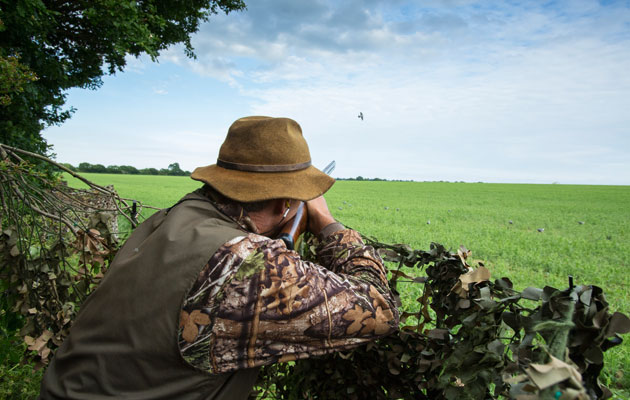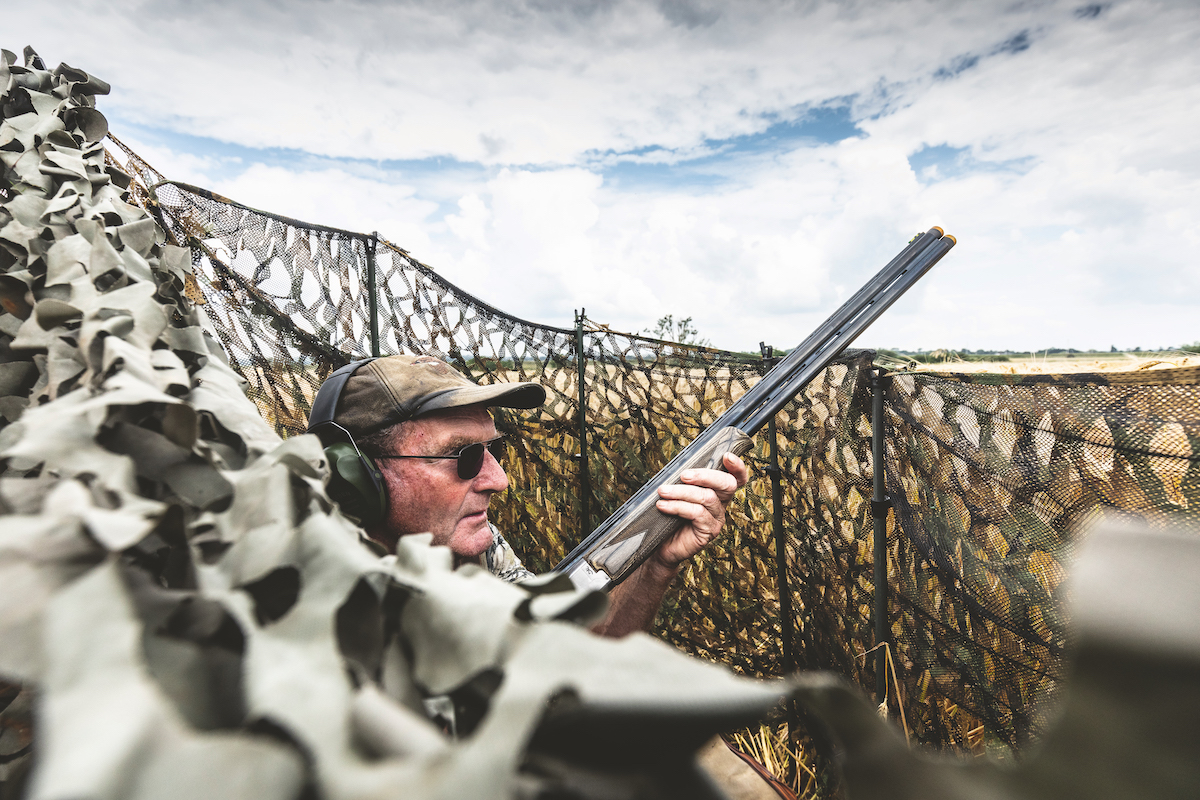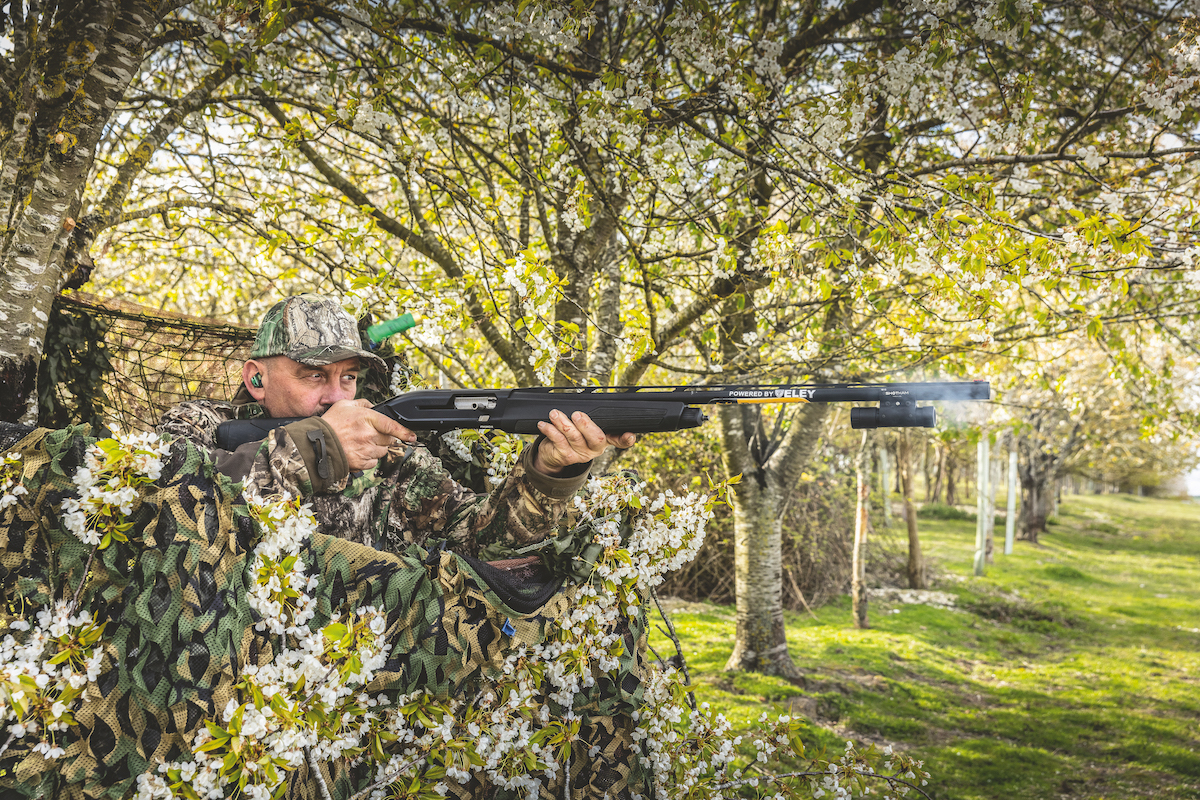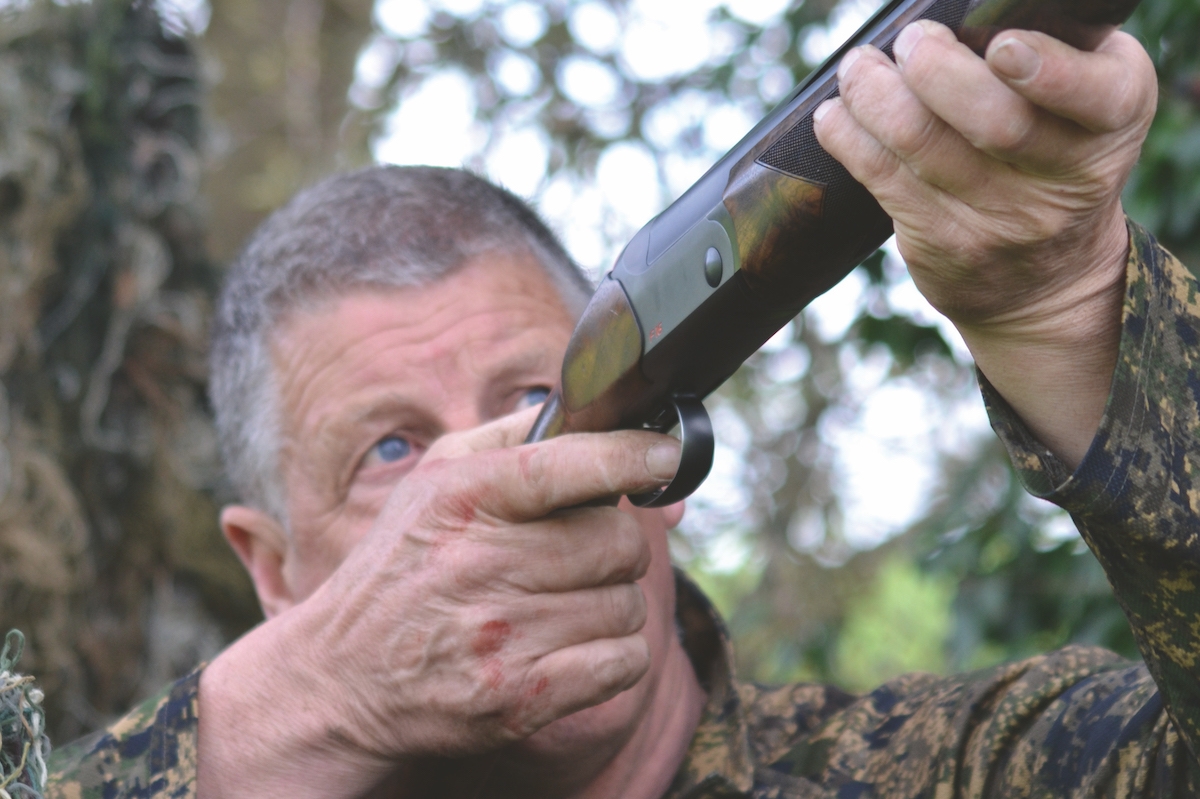Sharing your hide
Peter Theobald reveals why two hides can be better than one and how to play nicely with others while sharing a hide

There are many advantages in sharing a day’s decoying with a friend, apart from the obvious of having someone help carry all the gear to where you intend to set up, and then get it all back to the car at the end of the day. What I am talking about is sharing the highs and lows of an average day in the field.
You may think people were hanging on your every word when you describe that incredible right and left you pulled off, but in reality, their eyes were probably glazing over, 10 minutes ago. But to have a like-minded friend actually witness the feat, or, more likely, rib you when you make a hash of things, for me, is what pigeon shooting is all about. That is not to say that Paul and I routinely sit together, but if our combined experience of 75 years indicates that there is only one position that is likely to be successful on a field, we have no hesitation in sharing that spot. Where we may differ from other decoyers sharing a situation is that we will look to maximise any opportunities coming our way. This can be achieved in several ways, depending on how birds are co-operating, and which way the wind is blowing. Let me explain.
Companionable characteristics
The first, and unarguable criterion is safety, no pigeon is worth putting up with a dangerous or excitable companion in the hide. You need to know with certainty which bird your partner is going to shoot. The easiest way of doing this is to take it in turns to fire first, the person whose turn it is will call the shot. What this means in practice is, lets say it is my turn to shoot first and a single bird approaches the decoys. Paul will keep right out of the way, allowing me my two shots, should I need them. If, for some inexplicable reason, I should miss, I immediately sit down, leaving Paul to clear up. If two birds approach, we will generally take one each, the person whose turn it is, again, calling the shot.
Obviously, whoever is on the right hand side of the hide takes the right hand bird, sticking to their side of the hide, even if the pigeons cross in flight. Because our timing is so similar, the two birds usually die simultaneously. If three or more birds come in, and it is not my turn to shoot first, I will concentrate on a pigeon at the back of the bunch, hoping it will flare my side when Paul shoots, and knowing he will ignore anything on my side. In this way, threes and fours can be killed in complete safety. We often achieve total wipeout when four birds drop in, but none escape, truly satisfying!
So how do we build a hide where we can both shoot safely without interfering in the other’s line of sight? If we are sharing a single hide, we will always put a dividing wall between us that is high enough to make it impossible to shoot over the other’s head. But the key ingredient is communication, we constantly tell each other what we are about to do, and when we intend to do it, often shouting for the other to take a shot if it makes a better bird for him. All this works best if the wind is blowing directly from behind, but with co-operation, can be just as deadly in a crosswind. What happens now is whoever is on the downwind side of the hide, needs to leave one or two birds from each flock to pass him, and then engage the next two birds, the first two then flaring in front of his partner. In every situation, we are striving to avoid barrels clashing, because one or the other is shooting at the wrong bird. The old maxim of “better spared than a bird shared”, is one to be observed in a pigeon hide, I don’t think Paul and I have shot at the same bird on more than a handful of occasions in all the years we have shot together.
Two seperate hides
The real advantage of sharing a situation comes when you occupy a hide each, but cover one set of decoys. Again, strict discipline is required, so that you are aware of your partner at all times, but you should be able to arrange things in a way to increase your arc of fire. If the wind is on our back, our hides will be about 40 yards apart with a loose decoy pattern spread evenly between us, meaning the outside edges are almost, but not quite, out of range of the other gun. Anything that heads for the middle of this pattern is usually doomed, being firmly in range of both guns. But there is always the odd bird that skirts the pattern, or flares from the back of a bunch when the other gun shoots first. These birds will offer a shot to whoever is on that side, greatly increasing the size of the bag. Shooting with someone who is instinctively on the same wavelength means the bird you select to shoot will often push other birds over your partner, again, enabling you to take threes and fours from most bunches.
Now we come to the most deadly situation of all, two hides covering one pattern in the centre of the field. You need settled pigeons, or at least birds that have few alternative feeding choices in the area, for it to work well, but that is generally what we look for anyway. I don’t think pigeons say to themselves “I can put up with one hide in the open, but I’m not falling for two!” though we will usually build them smaller, and decorate them with natural foliage to make them less intrusive. The key factor is that we are always able to get the wind on our back, meaning we can create a pattern that funnels the birds right between the two hides often placing the whirly behind us to get them right in. There is nowhere for the pigeons to go once they are committed to the pattern, the end of a big day resembling a warzone, with dead birds strewn round a 50 yard circle of the hides. Definitely a case where two hides are better than one.








